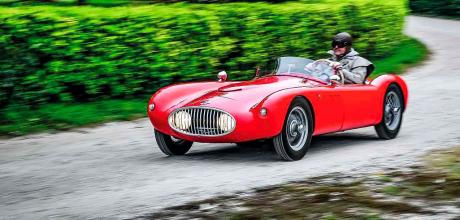1952 Zanussi 1100 Sport
One man’s technical knowledge made the 1952 Zanussi 1100 Sport far more significant than the world would remember.
Words Massimo Delbò
Photography Max Serra
THE APPLIANCE OF SCIENCE
It looks sporty, it’s red and – trust me – it makes a lot of noise. But drive it and you’ll never hear somebody scream ‘It’s a Zanussi!’ because, to most, this is an unknown marque. Zanussi manufactured only a tiny number of cars: just seven, plus a few more based on customers’ cars, mostly the Fiat 508 Balilla and the 1100. This car is a real oddity. Fioravante Zanussi was born in 1894 at Pasiano di Pordenone, in north-east Italy, the eldest of nine children. He showed a keen in interest in all things mechanical from an early age – four of his brothers would end up working with cars, too. By the age of 16 he had a job with Anonima Aquila Italiana, a car and engine manufacturer in Turin. He soon moved to the bigger, better established SCAT (Società Ceirano Automobili Torino), where he was assigned to the racing department.
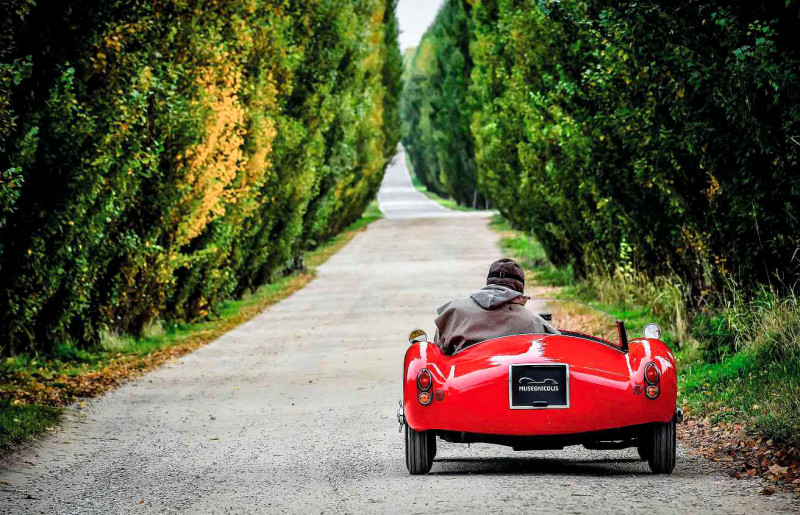
It is important to remember that in the early 1900s the Ceirano brothers were the leading force behind the growing Italian motoring scene, and their contribution to the development of Italian cars of the period is immeasurable. SCATs won the Targa Florio in 1911, 1912 and 1914; before World War One, the racing driver Tazio Nuvolari was distributing their cars in the Veneto region. The talented and passionate young Zanussi was in exactly the right place to build his knowledge and experience.
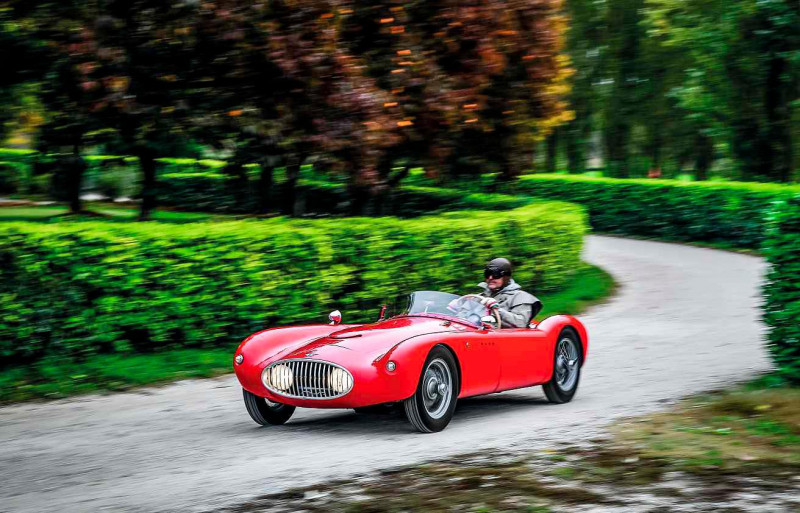
In 1914 Zanussi was hired by FIAT (Fabbrica Italiana Automobili Torino) as an engine testing specialist, but then Italy entered the war and he was enlisted as a motorcycle courier. ‘He was dreaming about aeroplanes, the new, growing force in the Army,’ says Zanussi’s son Ezio. ‘As soon as he spotted an opportunity, he asked to be moved. His commanding officer did not want to lose his skills and refused to sign the necessary authorisation. So Fioravante was given a promotion but he refused it, even though he would be punished for this gesture. That’s the sort of man he was.’ In 1919, with the war over, Fioravante Zanussi moved to Treviso and opened his own workshop. It welcomed cars and motorbikes, and Zanussi became known for tuning the steeds of local gentleman drivers. He even began advertising his name as a driver in local events.

‘We have evidence of him racing motorcycles in 1924, a special supercharged 100cc bike, and cars, too, in events such as the Vittorio Veneto-Cansiglio hillclimb with an OM,’ says Ezio, today a spirited 90-year-old. ‘We have no idea why he suddenly quit the motorcycle business. Dad wasn’t an open character and seldom spoke about his work. Our memories often come from what we saw in person but, from the moment that decision was taken, nothing with two wheels ever entered the shop or the family garage again.’
In 1928 Zanussi entered in the Brescia Speed Kilometres an Alfa Romeo RL he had tuned, finishing with a better time than the overall winner. In 1936 came a short stint in Somalia, in those days an Italian colony, as a specialist in diesel fuel pumps, before he returned to Treviso and a new workshop, where he took care of the Fiat 1100 Sport owned by Alberto Comirato, winner of the 1938 Italian Championship.
‘Fioravante Zanussi decided to create something really special, based on an Alfa Romeo 6C’
These were the years of increasing success for the Mille Miglia, and all of Italy was scattered with small mechanics’ shops where, with little money but lots of imagination, racing specials were manufactured. The early wave of that movement – nicknamed by many as ‘Etceterini’ – included such names as Stanguellini, Ermini, Giannini and so on, all of which were trademarks of the Italian racing movement until the 1960s.
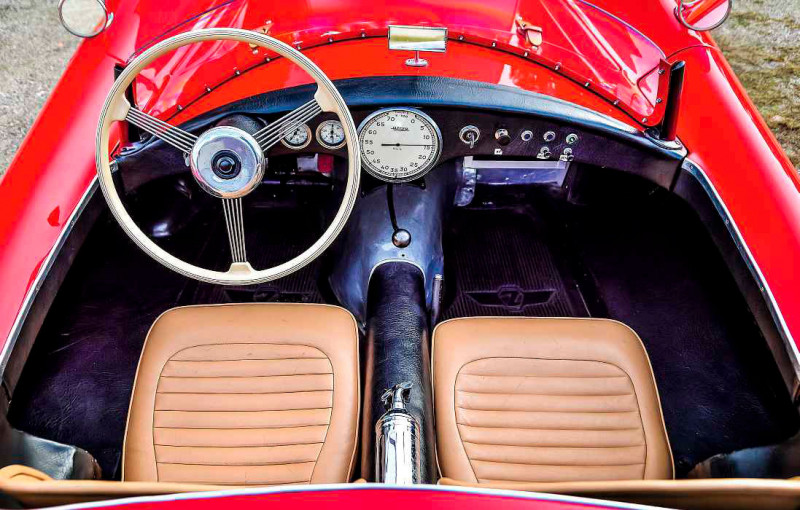
‘Just before the Second World War, my father achieved his dream of manufacturing a car under his own name,’ says Ezio. ‘He started with the rolling chassis and engine of a Fiat 508C 1100, with an alloy body and cycle wings. Unfortunately, the war forced a shift in priorities; racing was replaced by surviving, anything just to keep the business running.’
Zanussi’s wartime projects included coal-fuelled cars and LPG systems, and, as soon as hostilities ceased, his workshop flourished again. ‘The whole of Italy wanted to go racing, and the Fiat 500 Topolino and 1100 with the engine tuned by my father were, quite simply, the fastest in the Categoria Turismo Normale, in which major modification was not allowed.’
From 1947 to 1955, Fioravante Zanussi enjoyed the pinnacle of his passion, manufacturing cars bearing his name. A prototype was made (it would receive a series of engines, including a BMW unit) with a racing chassis, while standard-bodied tuning included fitting a Fiat 500A with a SIATA cylinder head. Alloy bodies were created mainly by the nearby Fratelli Vendrame workshop.
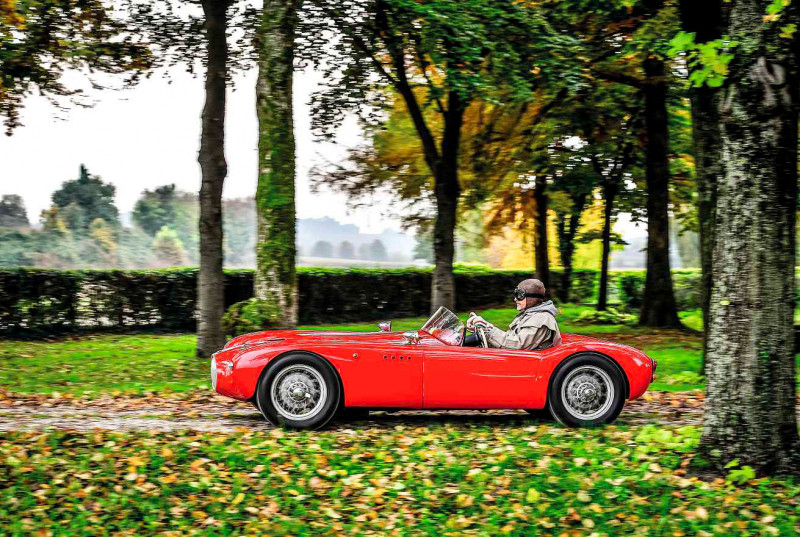
‘Fioravante Zanussi decided to create something really special, based on an Alfa Romeo 6C’
During those early years, Fioravante decided to create something really special, based on an Alfa Romeo 6C 1750 Compressore. The donor car, chassis number 0211463, was registered in December 1929, in Milan. By January 1934 it was listed with its first body modification, having been transformed from an open two-seater to a closed four-seater. Several owners later, in December 1951 it was sold to Fioravante Zanussi for 100,000 lire – the equivalent of just €1700 today. We don’t know what condition the 22-year-old Alfa Romeo was in, but it doesn’t really matter because in October 1952 it was declared to be an open siluro sport (‘torpedo’) body, with two seats once more but four cylinders instead of six and its fiscal power rating revised down from 19 to 13hp.
None of these modifications seems extraordinary; a new body and new engine were not unheard of in Italy’s post-war racing community. However… ‘The amazing early story of this car is that my father did not swap the twin-cam Alfa Romeo unit for a more normal four-cylinder one,’ says Ezio. Instead, Fioravante Zanussi chopped cylinders 5 and 6 off the original 6C engine, downsizing it to qualify for racing in the same class as the Fiat 1100. The final result was an Alfa Romeo four-cylinder of 1168cc (the original six-cylinder was 1752cc); the ubiquitous Fiat 1100 was 1089cc.
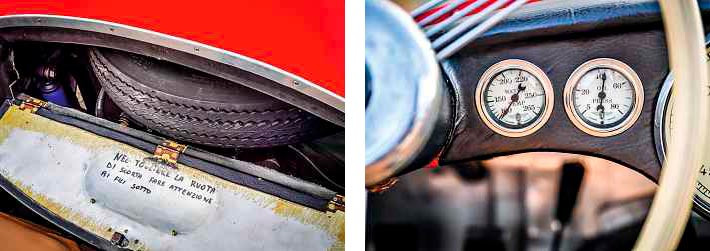
Anyone with even a basic knowledge of mechanics can imagine the immense task of such an operation, in a small local workshop in the 1950s. Block, heads, crankshaft, camshafts – everything needed to be shortened and rebalanced, while a new alloy panel was machined to enclose the exposed parts, and attached by a series of bolts.
‘I recall that the most difficult part to rework was the crankshaft, as in a six-cylinder you have the journals at 120°, while in a four you need them at 180°. It took nights at the welding shop, slowly heating the crankshaft, to make it soft without destroying its rigidity,’ says Ezio. ‘Then we had to recreate all the new lubrication passages. I was too young to notice the details, and we have to consider the fact that nothing was put on paper, but I remember seeing the engine finalised and used by my father. It was fuelled by four Dellorto carburettors from motorbikes, and was initially installed in his 1949 Fiat 508C chassis with a racing body and cycle wings. It sounded amazing.’
In the meantime, the spirit of Fioravante Zanussi seemed indomitable, and he began to focus on the second technical wonder associated with this project: the chassis. ‘He manufactured a completely new frame, handmade from 4x10cm box-section steel, tapering in order to create the space necessary for the wheels to steer,’ says Ezio. ‘There is no crossmember and the floorpan has a slot cut in it for the driveshaft, enclosed by sheet metal welded to the structure for rigidity. Almost all the mechanical parts, such as the rear axle and suspension, are supported by this frame, allowing for a perfectly flat floor. As for its body, the new car followed the racing fashion of the early 1950s, adopting a barchetta style, created in aluminium alloy by the local and trusted Fratelli Vendrame bodyshop.’
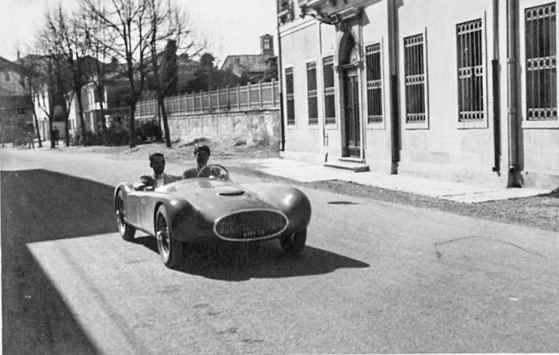
This is the complex and fascinating origin of the Zanussi 1100 Sport, chassis number 0211463, now loked after and displayed by the Museo Nicolis at Villafranca di Verona. The car began life equipped with the modified Alfa engine, paired, as Ezio recalls, with a Fiat 1500 transmission; the engine was later swapped for a tuned Fiat 1100 unit. ‘I remember the car was still equipped with the Alfa engine when sold, but it was gone before my father’s passing, in October 1960,’ says Ezio. ‘The official paper reported in December 1960 suggests it was the other way round. As we are talking of more than 60 years ago, I don’t remember all the details of the sale.’
The new owner, Armando Alberti, was 28 years old in 1960 and a resident of Trento county; a new logbook and numberplate were released, TN 37289 being assigned in the summer of 1961. The car was officially described as an Alfa Romeo Type Zanussi, with a Siluro Sport twoseater body, equipped with a four-cylinder engine of 1089cc – the latter detail is important, as that is the exact cubic capacity of the Fiat Type 1100 B engine, manufactured since 1949. It’s likely that Fioravante Zanussi, in a bid to speed up the registration process, kept the original Alfa Romeo chassis number, and the related numberplate, too, for his new chassis. From then on very little is known, although in 1983 the car was de-registered from the Italian motor vehicle department, simply because it had not been traded or road-registered for a long time.
Silvia Nicolis is chairwoman of the family museum: ‘I don’t know when or where my father bought the Zanussi, but it has been with us since the very early 2000s,’ she says. ‘When we bought it, the car was already fitted with the tuned Fiat 1100 four-cylinder engine and transmission, and most likely this is of immense benefit to its reliability. On the other hand I’m sure my father, a gatherer of everything mechanical that could be considered an expression of human skill, would have loved to have the modified Alfa engine as well, at least to put on display, for the personal pleasure of studying it and appreciating the capability of the manufacturer. Knowing him, I suspect that these are the main reasons he bought the car. He wanted to pay respect to a guy capable of creating a car so advanced, that looks so wonderful and performs so well, in his small shop. Plus, of course, we can’t forget the important link of Zanussi with the racing scene of the period and the characteristic barchetta body style, so typical of that racing period.’
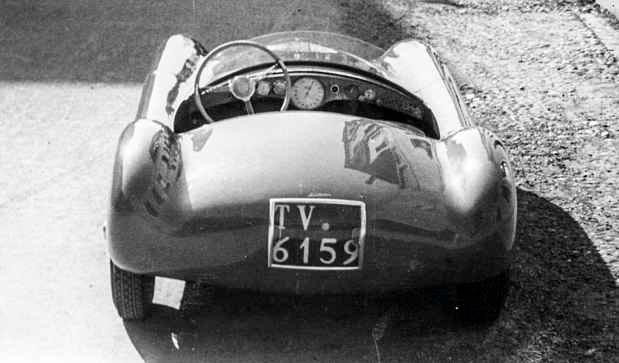
Time to drive. I get into the car, practically sitting on the ground with all of my head protruding above any protection offered by the low windshield – Fioravante Zanussi must have been significantly shorter to fit behind it. The flat floor and driving position remind me of a very early Jaguar E-type; it is not uncomfortable and, once I’ve pushed the starter button, I forget everything else as my body vibrates and resounds with the engine noise. I can only imagine how it would have been with the modified Alfa engine.
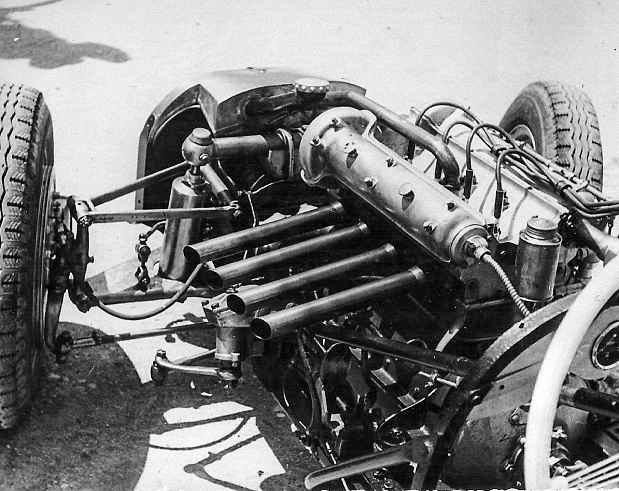
Power is hardly limitless, but the Fiat four-cylinder is happy to rev, and the lightweight construction makes the most of its sporting attitude, as does the car’s easy ability around corners. All the controls respond smoothly, cornering attitude can be adjusted on the throttle, and the chassis suffers only over bumps. The Zanussi’s handling is better than so many of its period rivals, proving just how skilled the man was in imagining and crafting such a difficult project in his own little workshop.
THANKS TO Ezio Zanussi, Emilio Zanotto, and Museo Nicolis, Italy (museonicolis.com).
‘I push the starter button and forget everything else as my body starts vibrating with the engine noise’
Top and above The Zanussi 1100 Sport seen in 1952, complete with the Alfa Romeo 6C engine that had been transformed into a four-cylinder.
TECHNICAL DATA 1952 Zanussi 1100 Sport
- Engine 1089cc OHV four-cylinder, two Weber 32 DRN carburettors
- Max Power 45bhp @ 4400rpm
- Max Torque 46lb ft @ 2800rpm
- Transmission Four-speed manual, rear-wheel drive
- Steering Worm and sector
- Suspension Front: transverse arms, coil springs, hydraulic dampers. Rear: live axle, trailing arms, semi-elliptic leaf springs, hydraulic dampers
- Brakes Drums
- Weight 790kg
- Top speed c75mph
This page, and left Tiny proportions, as befitting a sports car with a 1.1-litre engine; for some time that engine has been a tuned Fiat 1100, fitted in place of the original cut-down Alfa Romeo unit.
Clockwise, from left Massimo Delbò at the wheel and exposed to the elements; the Zanussi, driven in 1952 by Fioravante Zanussi’s son Angelo; simple cockpit with slender seats and sprung steering wheel.


